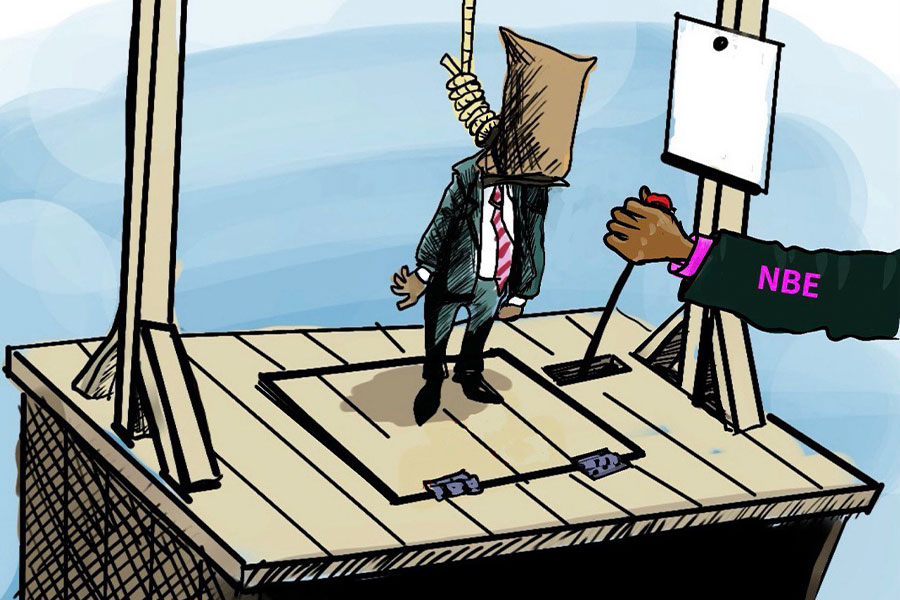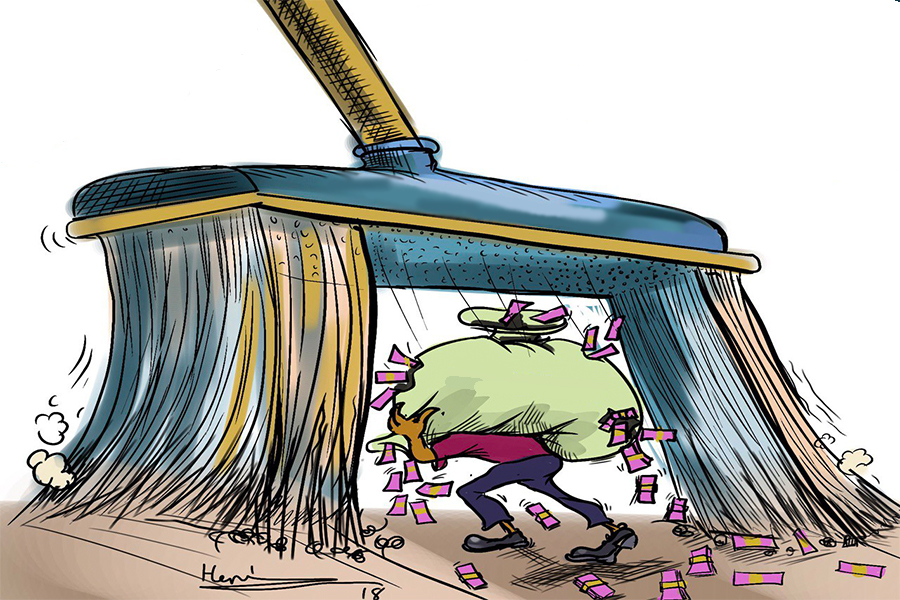
Photo Gallery | 180346 Views | May 06,2019
Sep 20 , 2025.
Getachew Reda’s return to the national stage was always going to stir attention. Once at the helm of Tigray’s post-wartime interim administration, his presence at Prime Minister Abiy Ahmed’s (PhD) book launch last week was packed, for many, with a welter of evocative claims in a speech of barely 34 minutes.
But his barbed remark, preferring “to die in a clean house than a filthy one”, did more than raise eyebrows. It sharpened a debate already simmering in Addis Abeba of whether the drive for urban renewal is, in fact, a quiet war on the city’s long-time residents. He faulted, rather uncannily, those he imagined could be content to live in dwellings without basic amenities, words widely read as an attempt to justify the federal and municipal authorities’ drive to spruce up the capital by shunting its residents to the urban fringe and down the economic ladder.
Even so, Getachew’s remarks were not all incendiary. He also hammered home the virtues of inclusivity and equity in urban renewal. Ironically, his message of caution hardly softened the public’s mood. However, one could agree with him that Addis Abeba is desperate to look like a 21st-century capital. New boulevards are plotted, bicycle lanes laid out, and glossy renders compare forthcoming streets to contemporary avenues of other cities, a point Getachew alluded to.
However, for many of the city’s millions of inhabitants, the facelift feels more like surgery without anaesthetic. A set of technical rules about how far buildings should stand back from the road, once the driest corner of planning law, has become a wrecking ball that smashes homes, businesses and the city’s social fabric.
The principle of a setback is straightforward. It is designed to keep buildings at a safe distance from fast-moving traffic, while also allowing for light, air, and greenery to pass through. Addis Abeba’s latest regulations, enforced since August 2025, follow that logic to a fault. Houses on a principal arterial road of 30 metres or more must now surrender 10 metres to the verge. Those on smaller collector streets give up three. Plots narrower than 20 metres or smaller than 500Sqm are now deemed too tiny to build on unless they merge with neighbours.
In theory, this produces orderly blocks. In practice, it has turned property ownership into a game of musical chairs whose losers are evicted.
The upheaval appears to have come from years of muddle. Overlapping proclamations, circulars and ad-hoc directives left Addis Abeba dotted with sheds here, high-rises there and little rhyme to the spacing in between. A directive issued in 2017 to govern building lines tried to end the confusion, but allowed local officials so much discretion that inconsistency thrived. By 2023, disputes over approvals clogged district bureaus. Developers complained of month-long waits for signatures. City officials' answer was to codify everything and push enforcement to the hilt.
A standard 300Sqm plot on a main road can now lose between 60Sqm and 75Sqm to setbacks, wiping out as much as a quarter of its usable area. Officials reckon that up to 25pc of many small lots is effectively frozen. Owners of larger parcels fare better, because the relative cost of the verge shrinks with scale. That is cold comfort to families who inherited property on slivers of plot carved up across generations. For them, a home that once pencilled out no longer does.
In November 2024, the human toll became unmissable. As part of the Corridor Development Project, planned to renovate 400 buildings, create 70 parks and lay 200Km of cycle and pedestrian lanes, municipal crews evicted 872 residents from the Bole and Lemi Kura districts alone. Amnesty International recorded cases in which compensation fell short of market value or paperwork arrived after the bulldozers. The city authorities shrugged and pressed on. Developers were fuming.
Addis Abeba is hardly alone in this folly. But, its twist is to tie setbacks to compulsory mergers. The result, unsurprisingly, is consolidation. The median plot size for permits on major corridors jumped from 300Sqm in 2019 to nearly 700Sqm in 2024. Small contractors are priced out, while land gravitates to the deepest pockets. Critics warn of creeping gentrification as modest homes give way to glass towers. Meanwhile, the City Administration's bill for compensating those displaced by the Corridor Project alone topped 1.2 billion Br, a heavy burden for tight coffers.
City officials, including Mayor Adanech Abiebie, insist that the pain will pass. They have introduced “tolerance bands” that relax frontage and area thresholds by 10pc, hoping to spare owners who miss the cut by a whisker. City officials are determined to inspect more than 24,000 construction sites foot-by-foot, warning that violators risk irrevocable sanctions. However, enforcement itself fuels anxiety. District offices vary in zeal, and appeals vanish into desk piles. Surveyors measure to the centimetre, while builders grumble, but look the other way across town.
The knock-on effects ripple far beyond real estate. By freezing small parcels, the rules reduce housing supply and push up rents. They tempt owners to build illegally or sell informally, feeding the very sprawl planners wish to tame. Social scientists warn of neighbourhoods “hollowed out” as the working poor decamp to distant edges where transport is inadequate and jobs scarcer. The promise of leafy boulevards may satisfy motorists, diplomats and visitors, but it risks turning Addis Abeba into a city admired from car windows rather than lived in.
There are better ways to tidy a metropolis. American cities wrestling with shortages now relax setbacks to allow duplexes and “missing-middle” flats. European councils experiment with form-based codes that focus on height, doorways, and street feel rather than rigid distances. Kigali and Nairobi dangle incentives for developers who keep courts, porches and trees intact. These approaches treat planning as a conversation, not a decree.
The city’s master planners may indeed create graceful streets, but empty storefronts and gated compounds would make a hollow victory. Addis Abeba's contemporary rulers need not slavishly copy any model. But they should foresee that beauty built on dispossession tends to crumble.
They could start by softening merger demands, offering mediation rather than mandates. They could stagger requirements so lone homeowners renovate instead of razing. And they should channel scarce capacity into the worst infractions, including tower blocks jutting into highways, rather than hound every flat that strays a metre. A living master plan updates rules as populations grow and budgets change; a brittle one cracks under reality’s weight.
The calculation of the current policy is unforgiving. Each kilometre of new sidewalk is matched by residents totting up how much of their savings vanish to meet the latest line on a map. For every 70 parks promised, some households feel they are left helpless to accept a payout that will come late, even in a mediocre amount.
Undoubtedly, Addis Abeba’s skyline will keep rising. The question is who will stand beneath it. Setback rules, like scaffolding, are meant to support construction, not dictate who lives where. Unless ambition is tempered with empathy, the capital risks becoming pleasing to the eyes. Yet barren, it may risk becoming a place of wide roads and vanished communities, where order is bought at the expense of those with the least voice. A grand avenue is little comfort when the house that once stood beside it has disappeared.
PUBLISHED ON
Sep 20,2025 [ VOL
26 , NO
1325]

Photo Gallery | 180346 Views | May 06,2019

Photo Gallery | 170544 Views | Apr 26,2019

Photo Gallery | 161581 Views | Oct 06,2021

My Opinion | 137274 Views | Aug 14,2021

Nov 1 , 2025
The National Bank of Ethiopia (NBE) issued a statement two weeks ago that appeared to...

Oct 25 , 2025
The regulatory machinery is on overdrive. In only two years, no fewer than 35 new pro...

Oct 18 , 2025
The political establishment, notably the ruling party and its top brass, has become p...

Oct 11 , 2025
Ladislas Farago, a roving Associated Press (AP) correspondent, arrived in Ethiopia in...